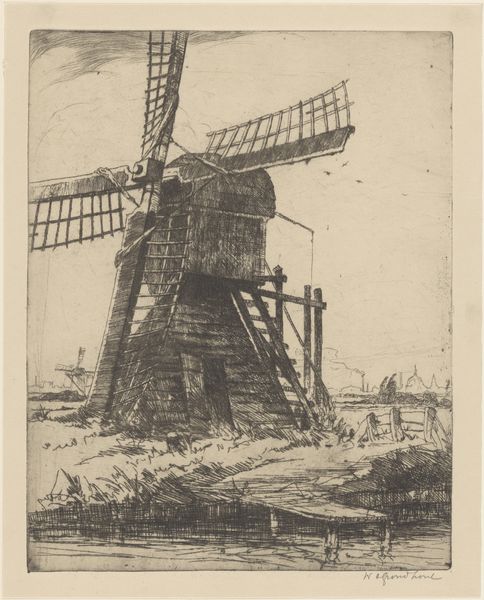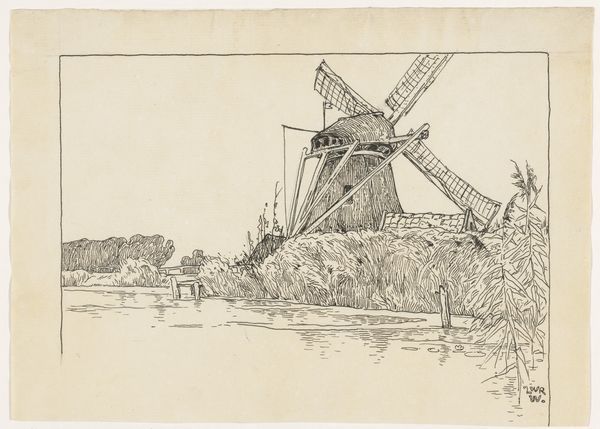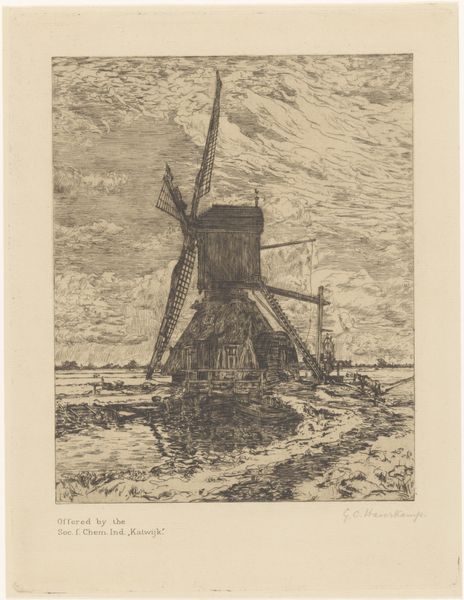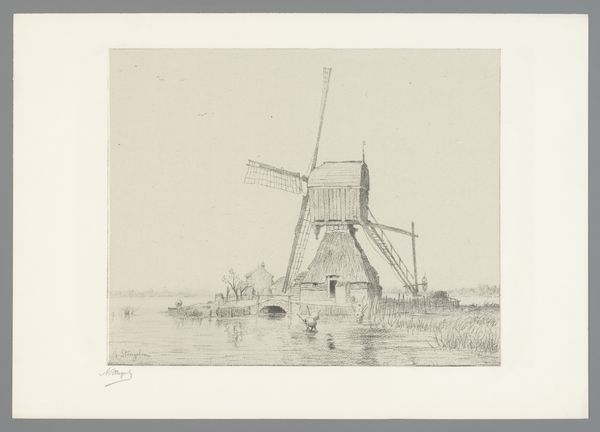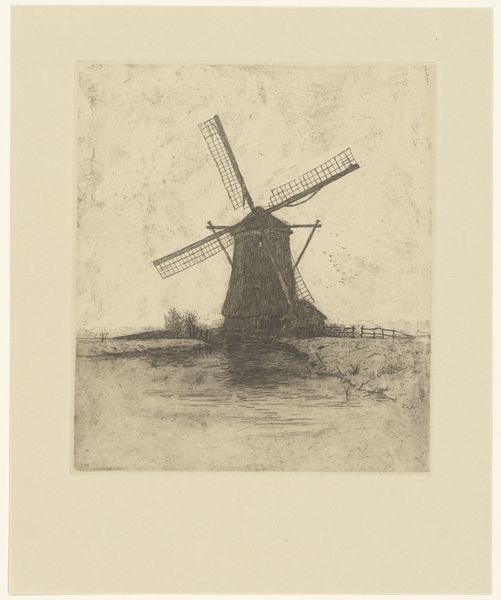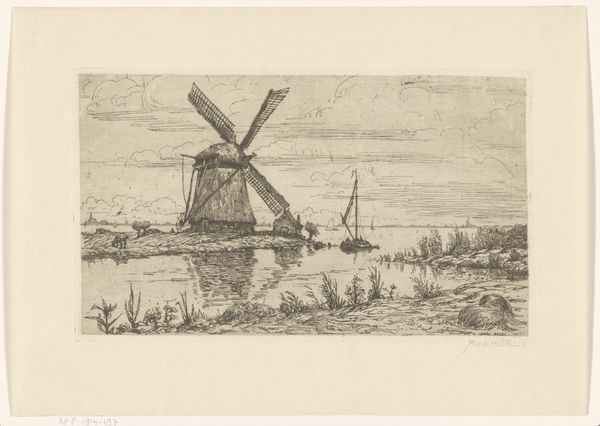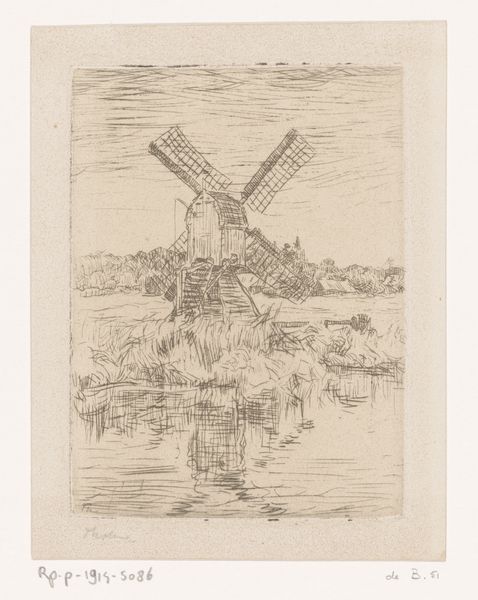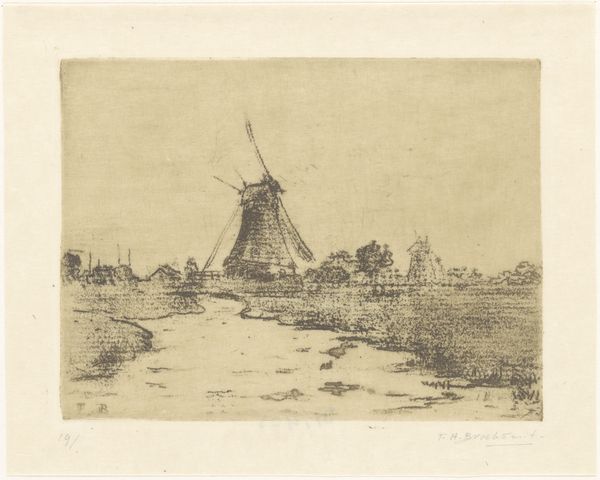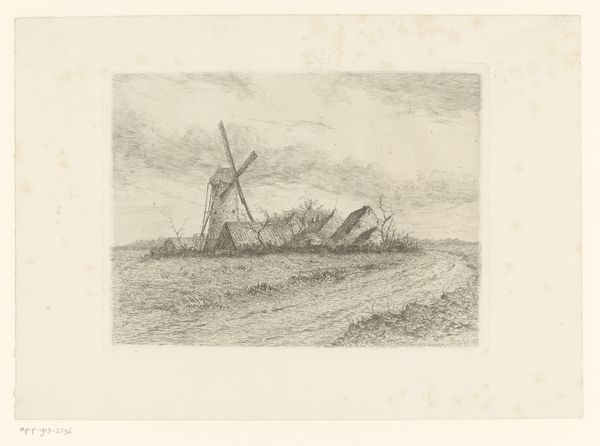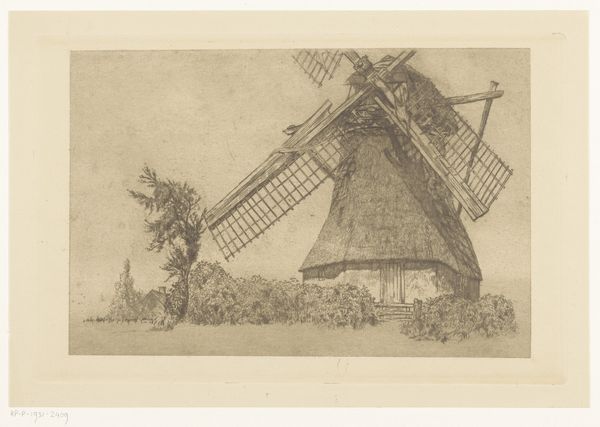
drawing, print, metal, etching, paper, ink
#
drawing
# print
#
metal
#
etching
#
pencil sketch
#
landscape
#
paper
#
ink
Dimensions: height 208 mm, width 118 mm
Copyright: Rijks Museum: Open Domain
Philip Zilcken etched this landscape with a mill, capturing a serene Dutch scene in delicate lines. The windmill, a defining symbol of the Netherlands, stands prominently, its sails reaching towards the heavens. These sails, reminiscent of the cross, evoke a sense of spiritual significance interwoven with daily life. But let us trace the deeper roots. The windmill's rotating form echoes ancient solar symbols and mandalas found across cultures. In a Jungian sense, the turning blades could represent the cyclical nature of time, the constant flux of life and death, and the eternal return. This motif surfaces in various forms: the prayer wheels of the East, the spinning dance of the Sufis, all resonating with the same primal understanding of cosmic movement. The psychological pull of the windmill lies in its embodiment of human ingenuity harnessing nature's power. It stirs a sense of nostalgia, connecting us to a simpler, agrarian past, yet also represents progress and the human drive to shape our environment. This emblem persists through art history, perpetually reinvented, carrying layers of meaning that engage our collective memory.
Comments
No comments
Be the first to comment and join the conversation on the ultimate creative platform.
